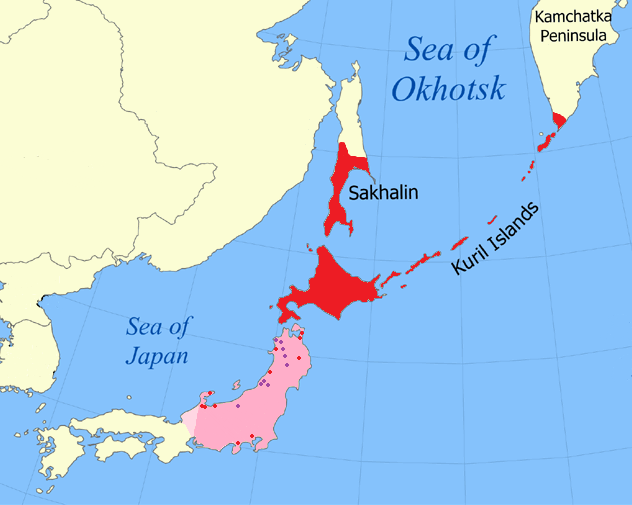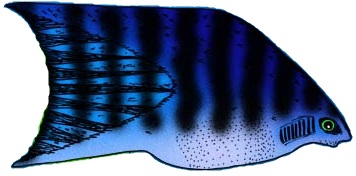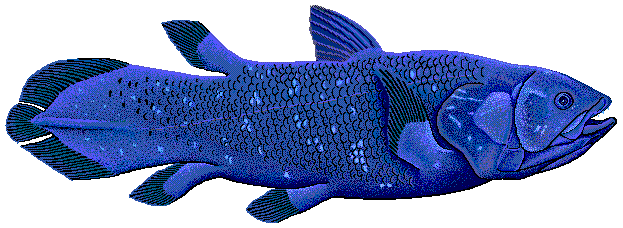|
Sinosturio Mikadoi
The Sakhalin sturgeon or Mikado sturgeon (''Sinosturio mikadoi'') is a species of fish in the family Acipenseridae. It is found in Japan and Russia. Taxonomy Prior to 2025, it was placed in the genus ''Acipenser''. However, this placement was long known to be paraphyletic. In 2025, it was moved to the revived genus ''Sinosturio''. Environment The Sakhalin sturgeon is known to be found in either a marine or freshwater environment within demersal depth range. This species is found in brackish waters. They are also native to a tropical climate. Size The Sakhalin sturgeon has reached the maximum recorded length of about 150 centimeters or about 59 inches as a tall fish. Biology The Sakhalin sturgeon is considered to be a species that migrates up the river from the sea in order to spawn. During the months of April to May, the Sakhalin sturgeon feeds in the freshwater and then returns to the ocean during the summer. The Sakhalin sturgeon (Acipenser mikadoi), which lives in the Amur ... [...More Info...] [...Related Items...] OR: [Wikipedia] [Google] [Baidu] |
Franz Martin Hilgendorf
Franz Martin Hilgendorf (5 December 1839 – 5 July 1904) was a German zoologist and paleontologist. Hilgendorf's research on fossil snails from the Steinheim crater in the early 1860s became a palaeontological evidence for the theory of evolution published by Charles Darwin in 1859. Life and work Franz Hilgendorf was born on 5 December 1839 in Neudamm (Mark Brandenburg). Between 1851 and 1854 he went to a gymnasium in Königsberg (Neumark) and later to the Gymnasium ''Zum Grauen Kloster'' (Grey Monastery) in Berlin where he graduated in 1858. In 1859 he started studying philology at the University of Berlin. After four semesters he changed to the University of Tübingen. In the summer of 1862 he joined an excavation by Friedrich August Quenstedt in the Steinheim crater. In 1863 Hilgendorf received his Ph.D. for work related to this excavation. He finished his research on the fossils during his time at the Museum für Naturkunde in Berlin. In 1868, Hilgendorf beca ... [...More Info...] [...Related Items...] OR: [Wikipedia] [Google] [Baidu] |
Intraspecific
Biological specificity is the tendency of a characteristic such as a behavior or a biochemical variation to occur in a particular species. Biochemist Linus Pauling stated that "Biological specificity is the set of characteristics of living organisms or constituents of living organisms of being special or doing something special. Each animal or plant species is special. It differs in some way from all other species...biological specificity is the major problem about understanding life." Biological specificity within ''Homo sapiens'' ''Homo sapiens'' has many characteristics that show the biological specificity in the form of behavior and morphological traits. Morphologically, humans have an enlarged cranial capacity and more gracile features in comparison to other hominins. The reduction of dentition is a feature that allows for the advantage of adaptability in diet and survival. As a species, humans are culture dependent and much of human survival relies on the culture and socia ... [...More Info...] [...Related Items...] OR: [Wikipedia] [Google] [Baidu] |
Taxonomy Articles Created By Polbot
280px, Generalized scheme of taxonomy Taxonomy is a practice and science concerned with classification or categorization. Typically, there are two parts to it: the development of an underlying scheme of classes (a taxonomy) and the allocation of things to the classes (classification). Originally, taxonomy referred only to the classification of organisms on the basis of shared characteristics. Today it also has a more general sense. It may refer to the classification of things or concepts, as well as to the principles underlying such work. Thus a taxonomy can be used to organize species, documents, videos or anything else. A taxonomy organizes taxonomic units known as "taxa" (singular "taxon"). Many are hierarchies. One function of a taxonomy is to help users more easily find what they are searching for. This may be effected in ways that include a library classification system and a search engine taxonomy. Etymology The word was coined in 1813 by the Swiss botanist A ... [...More Info...] [...Related Items...] OR: [Wikipedia] [Google] [Baidu] |
Critically Endangered Fish
As of July 2017, the International Union for Conservation of Nature (IUCN) listed 1,000 critically endangered fish species, including 87 which are tagged as possibly extinct. Of all evaluated fish species, 3.0% are listed as critically endangered. The IUCN also lists four fish subspecies as critically endangered. Of the subpopulations of fish evaluated by the IUCN, 20 species subpopulations and one subspecies subpopulation have been assessed as critically endangered. Additionally 3191 fish species (21% of those evaluated) are listed as data deficient, meaning there is insufficient information for a full assessment of conservation status. As these species typically have small distributions and/or populations, they are intrinsically likely to be threatened, according to the IUCN. While the category data deficient indicates that no assessment of extinction risk has been made for the taxa, the IUCN notes that it may be appropriate to give them "the same degree of attention as threa ... [...More Info...] [...Related Items...] OR: [Wikipedia] [Google] [Baidu] |
Fauna Of Sakhalin
Sakhalin ( rus, Сахали́н, p=səxɐˈlʲin) is an island in Northeast Asia. Its north coast lies off the southeastern coast of Khabarovsk Krai in Russia, while its southern tip lies north of the Japanese island of Hokkaido. An island of the West Pacific, Sakhalin divides the Sea of Okhotsk to its east from the Sea of Japan to its southwest. It is administered as part of Sakhalin Oblast and is the largest island of Russia, with an area of . The island has a population of roughly 500,000, the majority of whom are Russians. The indigenous peoples of the island are the Ainu, Oroks, and Nivkhs, who are now present in very small numbers. The island's name is derived from the Manchu word ''Sahaliyan'' (), which was the name of the Qing dynasty city of Aigun. The Ainu people of Sakhalin paid tribute to the Yuan, Ming, and Qing dynasties and accepted official appointments from them. Sometimes the relationship was forced but control from dynasties in China was loose for t ... [...More Info...] [...Related Items...] OR: [Wikipedia] [Google] [Baidu] |
Fish Of Russia
A fish (: fish or fishes) is an aquatic, anamniotic, gill-bearing vertebrate animal with swimming fins and a hard skull, but lacking limbs with digits. Fish can be grouped into the more basal jawless fish and the more common jawed fish, the latter including all living cartilaginous and bony fish, as well as the extinct placoderms and acanthodians. In a break to the long tradition of grouping all fish into a single class (Pisces), modern phylogenetics views fish as a paraphyletic group. Most fish are cold-blooded, their body temperature varying with the surrounding water, though some large active swimmers like white shark and tuna can hold a higher core temperature. Many fish can communicate acoustically with each other, such as during courtship displays. The study of fish is known as ichthyology. The earliest fish appeared during the Cambrian as small filter feeders; they continued to evolve through the Paleozoic, diversifying into many forms. The earliest fish w ... [...More Info...] [...Related Items...] OR: [Wikipedia] [Google] [Baidu] |
Fish Of East Asia
A fish (: fish or fishes) is an aquatic, anamniotic, gill-bearing vertebrate animal with swimming fins and a hard skull, but lacking limbs with digits. Fish can be grouped into the more basal jawless fish and the more common jawed fish, the latter including all living cartilaginous and bony fish, as well as the extinct placoderms and acanthodians. In a break to the long tradition of grouping all fish into a single class (Pisces), modern phylogenetics views fish as a paraphyletic group. Most fish are cold-blooded, their body temperature varying with the surrounding water, though some large active swimmers like white shark and tuna can hold a higher core temperature. Many fish can communicate acoustically with each other, such as during courtship displays. The study of fish is known as ichthyology. The earliest fish appeared during the Cambrian as small filter feeders; they continued to evolve through the Paleozoic, diversifying into many forms. The earliest fish wi ... [...More Info...] [...Related Items...] OR: [Wikipedia] [Google] [Baidu] |
Green Sturgeon
The green sturgeon (''Sinosturio medirostris'') is a species of sturgeon native to the northern Pacific Ocean, from China and Russia to Canada and the United States. Taxonomy Prior to 2025, it was placed in the genus ''Acipenser''. However, this placement was long known to be paraphyletic. In 2025, it was moved to the revived genus ''Sinosturio''. Description Sturgeons are among the largest and most ancient of ray finned fishes. They are placed, along with paddlefishes and numerous fossil groups, in the infraclass Chondrostei, which also contains the ancestors of all other bony fishes. The sturgeons themselves are not ancestral to modern bony fishes but are a highly specialized and successful offshoot of ancestral chondrosteans, retaining such ancestral features as a heterocercal tail, fin structure, jaw structure, and spiracle. They have replaced a bony skeleton with one of cartilage, and possess a few large bony plates instead of scales. Sturgeons are highly adapte ... [...More Info...] [...Related Items...] OR: [Wikipedia] [Google] [Baidu] |
Acipenseridae
Sturgeon (from Old English ultimately from Proto-Indo-European language, Proto-Indo-European *''str̥(Hx)yón''-) is the common name for the 27 species of fish belonging to the family Acipenseridae. The earliest sturgeon fossils date to the Late Cretaceous, and are descended from other, earlier Acipenseriformes, acipenseriform fish, which date back to the Early Jurassic period, some 174 to 201 million years ago. They are one of two living families of the Acipenseriformes alongside paddlefish (Polyodontidae). The family is grouped into five genera: ''Acipenser'', ''Huso'', ''Scaphirhynchus,'' ''Sinosturio'', and ''Pseudoscaphirhynchus''. Two species (''Adriatic sturgeon, H. naccarii'' and ''Dabry's sturgeon, S. dabryanus'') may be extinct in the wild, and one (''Syr Darya sturgeon, P. fedtschenkoi'') may be entirely extinct. Sturgeons are native to subtropical, temperate and sub-Arctic rivers, lakes and coastlines of Eurasia and North America. A Maastrichtian-age fossil found i ... [...More Info...] [...Related Items...] OR: [Wikipedia] [Google] [Baidu] |
Mitogenome
Mitochondrial DNA (mtDNA and mDNA) is the DNA located in the mitochondria organelles in a eukaryotic cell that converts chemical energy from food into adenosine triphosphate (ATP). Mitochondrial DNA is a small portion of the DNA contained in a eukaryotic cell; most of the DNA is in the cell nucleus, and, in plants and algae, the DNA also is found in plastids, such as chloroplasts. Mitochondrial DNA is responsible for coding of 13 essential subunits of the complex oxidative phosphorylation (OXPHOS) system which has a role in cellular energy conversion. Human mitochondrial DNA was the first significant part of the human genome to be sequenced. This sequencing revealed that human mtDNA has 16,569 base pairs and encodes 13 proteins. As in other vertebrates, the human mitochondrial genetic code differs slightly from nuclear DNA. Since animal mtDNA evolves faster than nuclear genetic markers, it represents a mainstay of phylogenetics and evolutionary biology. It also permits traci ... [...More Info...] [...Related Items...] OR: [Wikipedia] [Google] [Baidu] |






